Blueprint for Jeep Wrangler LJ Build
For the two gear sets and differential rebuilding kits, we chose Yukon Gear and Axle. The company’s master overhaul kits are what you need for a successful differential rebuilding. All of the parts that you need are provided to do the job. The Yukon master kits will ensure the fit and hassle-free install utilizing the best components, including Timken bearings. Just remember, assembling gear sets properly is not for the inexperienced mechanic, nor for the experienced tech without the proper tools. Other than the rebuilding of an engine or an automatic transmission, nothing on the Jeep—in our opinion—is more technical and critical than changing/rebuilding gear sets.
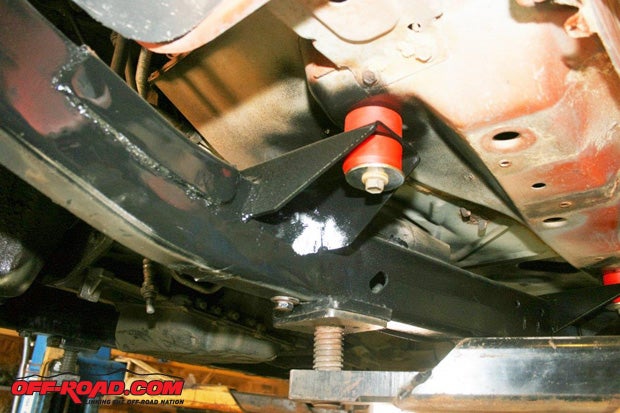
A word of warning: Make sure you follow the manufacturer’s break-in procedures faithfully if you change your gearing! Today’s gears are cut closely to increase their lifetime and reliability, and to decrease wear and noise, if you don’t break them in correctly and carefully, they could very well seize and strand you in the middle of the desert. During the break-in period, the gears will get so hot; you’ll give yourself a severe burn if you should happen to touch the differential cover plate. Throw water on the rear cover and it’ll boil off instantly! The installation pamphlet gives very specific instructions on the 500-mile break-in period, including draining and refilling the differentials after the 500-mile period. We used standard gear lube during the break-in and then refilled it with Royal Purple 85W-140 synthetic gear lube to extend the gears’ lives.
What happens to your vehicle when you change the gears and tire size, especially in today’s vehicles with all their onboard computing? Your speedometer goes off, your shift points are wrong, and in many instances the anti-skid program starts kicking in at completely wrong times and conditions. How to correct these problems? You’ll need a computer control module such as the AEV ProCal Module to correct all these problems (AEV doesn’t offer a module for Jeeps earlier than 2007)! The bad news is that the module will only do it for one vehicle—it keys to the first vehicle to which it’s connected. However, it can modify so many things, depending upon the model, from squaring up the steering wheel to controlling the daytime running lights—it is money well spent. In fact, it can be used to temporarily increase idle RPM whenever you’re winching or running an onboard water heater for showering on the trail. If you don’t wish to buy a module, most shops will have modules that will reprogram your onboard computer.
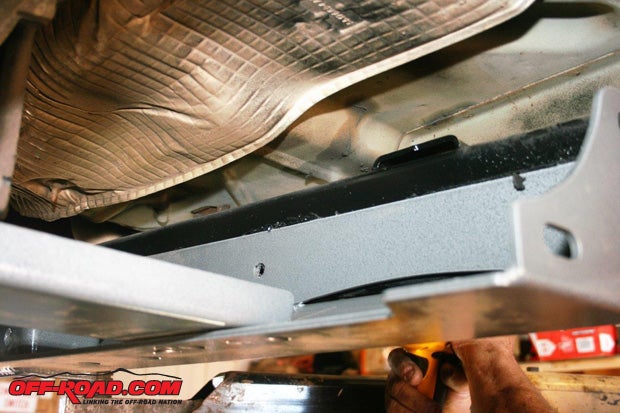
With a 4-inch lift, we also needed a longer rear driveshaft; however, the front ‘shaft did not need to be replaced. The OEM front driveshaft is built with a double Cardin-style CV (constant velocity) joint while the rear is a slip-yoke/U-joint design. Since we were retaining the front driveshaft, we had it rebuilt with new joints by Precision Automotive in Kingman, Arizona, so we could hit trail with completely fresh underpinnings.
A few years ago, our JK’s driveshafts were damaged during an extended trip over the Sierra Nevada’s Rubicon Trail. After seeing what the Rubicon Trail did to both of our JK’s OEM driveshafts, we decided we’d rather replace them with stronger aftermarket driveshafts instead of OEM ‘shafts. At that time, with fingers walking through the Internet, we found Powertrain Industries.
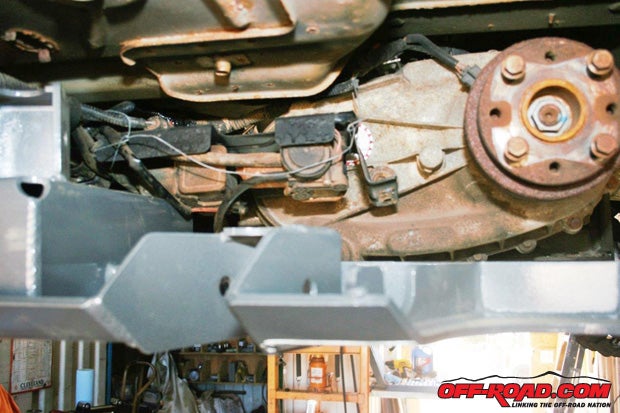
Because we were supremely happy with the JK’s driveshafts and their prices, we contacted Powertrain again to order the LJ’s rear driveshaft. Powertrain builds double Cardin-style CV (constant velocity) driveshafts, which replaces the OEM slip yoke. The 1310 series for Jeeps are somewhat light-duty compared the 1350 series or larger normally seen on ¾-ton or 1-ton trucks, but it is plenty strong for the Wrangler applications. And Powertrain’s design gets rid of the slip yoke and returns to the old-school design of the slip joint being near the differential end of the driveshaft. If you are looking for a complete shaft that is dynamically balanced and ready to install in your vehicle, Powertrain has the broadest selection. According to company literature, Powertrain builds these ‘shafts every day, and usually has them ready to ship immediately.
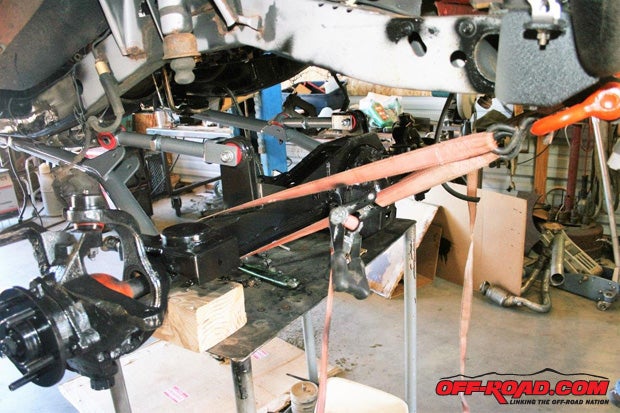
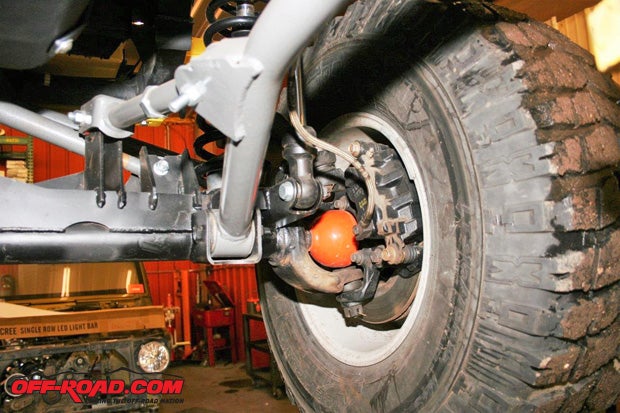
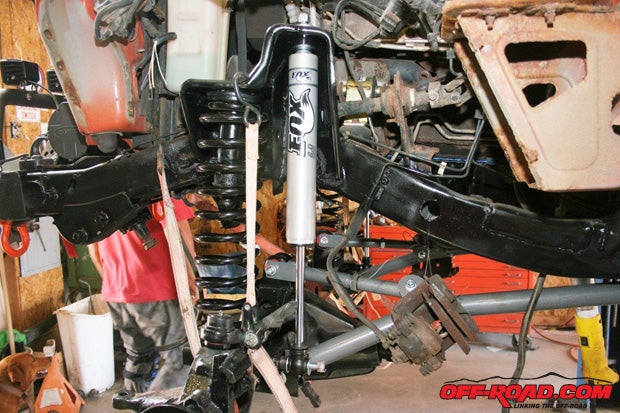
Our first alternate solution was a set of Yokohama Geolandar M/T 35x12.50-17 tires on Raceline steel bead-lock wheels from Summit Racing. When 35-inch (or larger) tires are used on lifted Jeeps, the tires apply such a great deal of stress to the running gear with their tremendous traction that the running gear must be improved. So we decided to increase the Jeep’s strength with lower gears and unbreakable axles inside the differentials to handle the increased traction. And the TNT trusses strengthened the axle tubes on the outside to support the increased weight of the tire-and-wheel combinations.
Differential Prep
TNT Customs of Cheyenne, Wyoming, offers an uplifting, sophisticated, strong, stable Rock-Tek suspension for TJs and LJs. This kit is not for the faint of heart; in fact, it can’t really be called “a kit.” This is not a “simple bolt-on assembly!” It is the most technical suspension system with which we’ve ever worked. We do not recommend installing this system in a home garage, even if you’re very experienced. It requires a very well-equipped shop with a vehicle hoist, a plasma cutter, a MIG welder, several grinders, air tools, drills (both floor and hand-held), power saws, floor jacks, and a multitude of hand tools. Plus, you’ll need an experienced technician and patience (our Jeep was on the hoist for two months). In addition, many procedures require more than one set of hands. In fact, if you can afford it and you have little patience, you should consider asking TNT Customs to do the install. They have the equipment, the tools, the knowledge, and—obviously—the experience. And TNT does the upgrade in just one week!
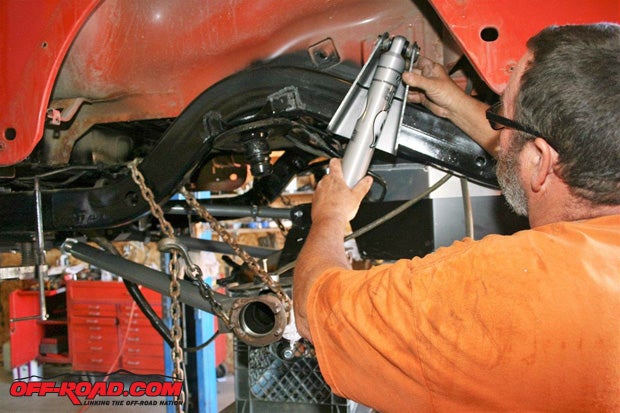
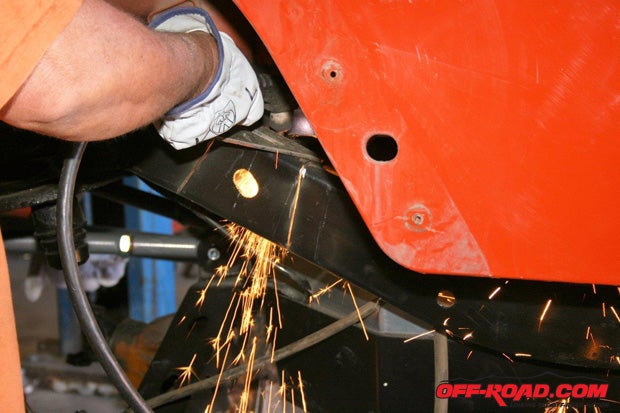
However, after all these warnings and conditions and requirements, would we do it again? You’re damn right we would! It may be the most complicated and sophisticated suspension system we’ve ever worked with, it’s also one of the best commercially-built suspension system we’ve ever had the extreme pleasure of riding on and driving!
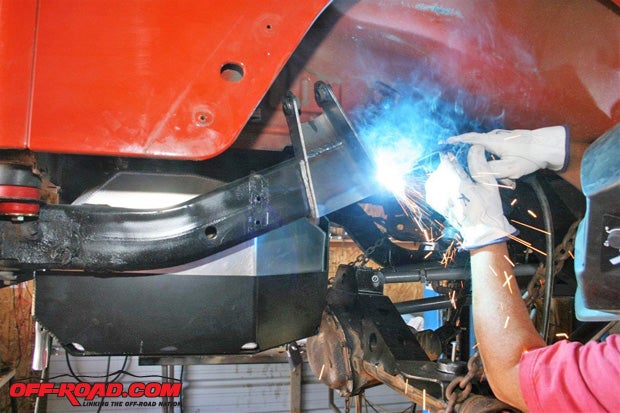
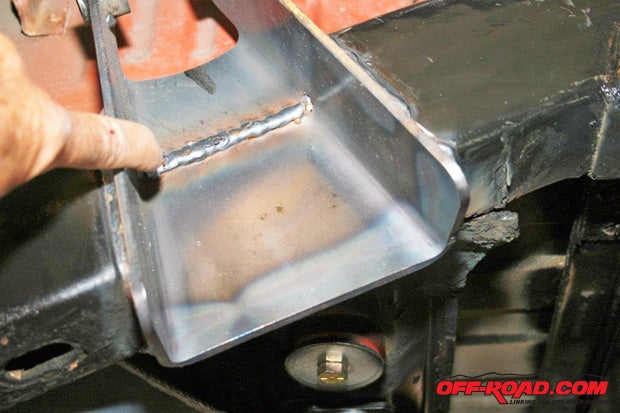
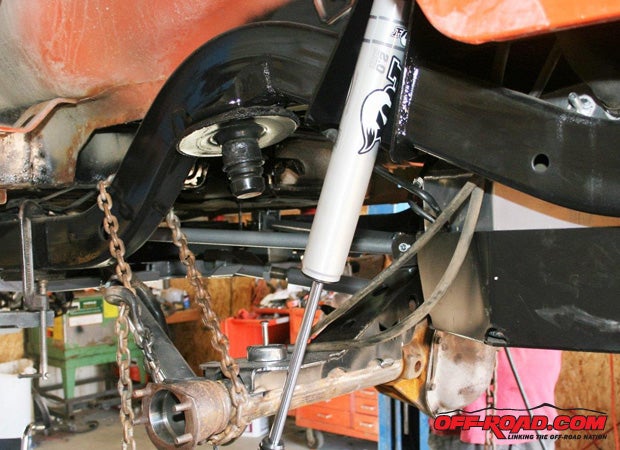
In the late-70s, this writer wrote a profile on Ivan “Ironman” Stewart for Truckin’ magazine. This was just before he signed on with Toyota. A part of the profile was a ride in his Ford F100 two-wheel-drive pre-runner (he said he also raced it in some pro rallies around the West Coast). Several Class 8 (SCORE’s stock pickup class at the time) trucks at the time weren’t as well-built or as well-designed as this pro-rally truck. It was an awesome, exciting and very fast off-road ride! Ivan was never out of control but he liked sliding sideways on the mountain fire trails more than driving straight (and this was before drifting!). At the time, with the suspensions available at that time, that truck was an awesome off-roader! However, my 2005 Rubicon Unlimited, with its TNT Customs’ suspension system, rides better and is more stable!
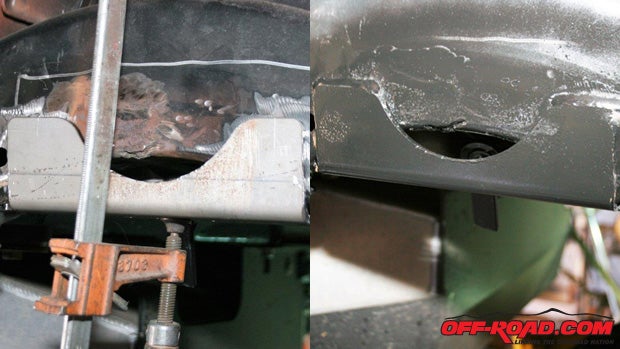
Not only is the Jeep more stable than stock at increased trail speeds, it is one heck of a rock crawler, too (as you can see in the photos). TNT Customs approaches this suspension design with synchronicity in mind, in which everything has to work together as a team, even though the shock absorbers are from Fox and the coil springs are from ARB, not from TNT. From ARB—the same folks known for air lockers and fridge/freezers—came the Old Man Emu coil springs (2989 front springs and 2949 rear springs).
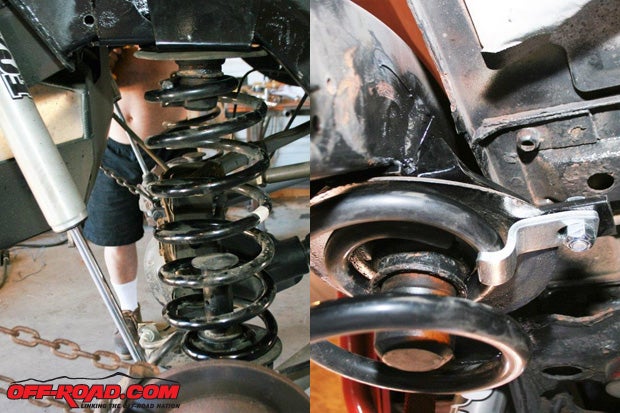
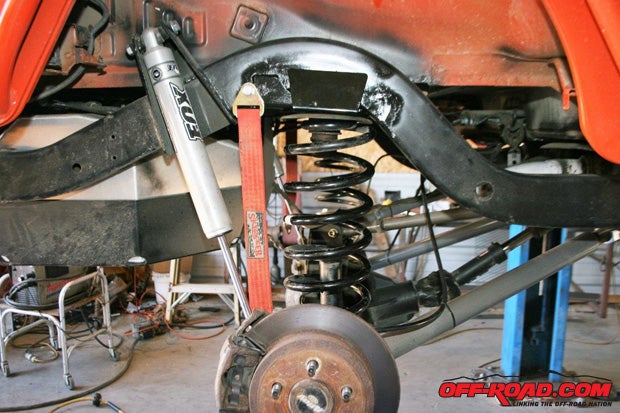
For shocks, TNT recommends Fox 2.0 Performance Series IFP smooth body shocks. They use race-proven dampening control to provide a comfortable on-road ride and predictable off-road handling in even the toughest conditions. According to Fox, the precision metal impact aluminum body increases cooling capacity and will never rust, and inside is Fox’s race-proven performance-valving technology. Fox’s Internal Floating Piston (IFP) mono-tube design separates the shock oil from the high-pressure, nitrogen-charged gas chamber. The IFP eliminates oil aeration, allowing maximum performance from the factory-tuned precision valving. The race-developed high-flow dampening piston, matched with application-specific valving, provides the 2.0 Performance Series IFP shock with a predicable ride quality capable of handling the roughest road conditions.
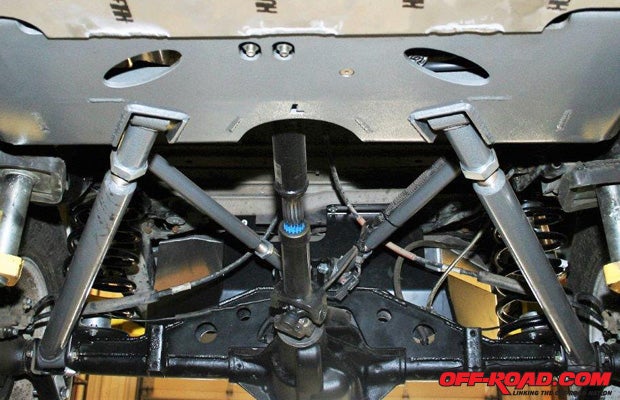
While the LJ’s Rock-Tek Y-link high clearance front arms are similar—albeit much stronger—to the Jeep’s OEM suspension; changing the rear suspension from a track bar system to a Rock-Tek dual-triangulated four-link—along with relocating the shock mounts (making the shock absorbers much more efficient)—vastly improves the overall stability of the Jeep. And there are no anti-sway bars to worry about disconnecting in this system.
According to TNT, “The Rock-Tek suspension is specifically designed for tackling the most difficult terrain. The TRI-4 rear suspension is designed to cycle vertically throughout articulation to eliminate rear-steer commonly found in other suspensions. Aggressive geometry coupled with a flat roll center will make your Jeep stick to even the steepest climbs or radical off-camber situations. Lower arms are manufactured from 2- x0.375-inch 1026 DOM tubing, to handle anything they may come in contact with. Upper arms are 1.50- x0.250-inch 1026 DOM tubing. All control arms have 2.5 inches of adjustable length and feature rebuild-able Flex joints and bushings.”
TNT also says: “Our high clearance pan gains 1 ¾-inch over stock on ‘97-‘02 models and nearly 3 inches on ‘03-‘06 model years. TNT Rock-Tek long arm suspensions come with a weld-on, full-length rear axle truss assembly that fits your rear axle. Our axle truss assembly includes our Tri-4 mount, coil spring mounts as well as new lower control arm mounts and shock mounts.… An added bonus of a weld-on truss assembly is an axle housing that is fortified against bending that can be caused by extreme terrain coupled with oversized tires.”
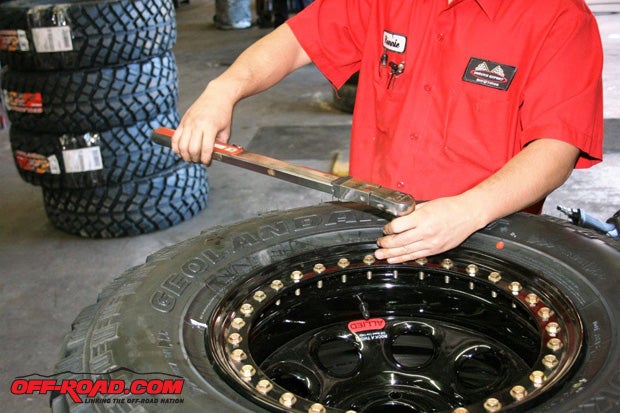
Speaking of oversized tires, you’re going to love the Geolandar M/T 35x12.50-17 directional tires from Yokohama if you like playing around in the mud. These tires can churn through the deepest of mud with ease because they feature beefy, deep tread lugs of very large proportions. In case your Jeep can’t fit 35-inch tires, the M/T directional tires are available in several different sizes, from 29 inches up to 40 inches in diameter. They also feature a directional tread pattern for outstanding traction and easier clean-out. Plus, the tires have extra sidewall ribs and an advanced tread compound for added durability out on the trail. Lastly, a step-block groove configuration increases their surface area and improves their drainage.
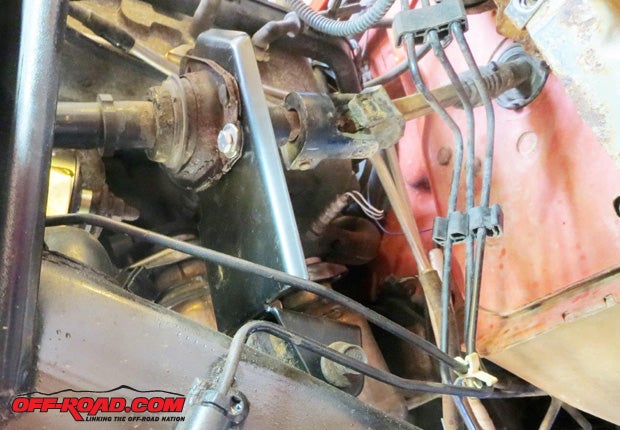
And big meats have to be mounted on wheels strong enough to support them and attractive enough to complement them. Raceline beadlock wheels from Summit Racing are said to be the strongest, toughest, and most durable beadlocks on the market and are specifically designed, engineered, and machined to hold up to the extreme abuses of off-road desert racing and professional rock crawling. They present a new direction for the styling and technology of off-road wheel designs, including the Daytona steel black wheels used on this project, which are solid in looks and performance! These fully functional beadlock wheels have a 32-bolt beadlock system built with durable outer rings and a strong inner lip to keep your rig driving over obstacles within their path by securing the tire’s bead to the wheel, even at extremely low air pressures.
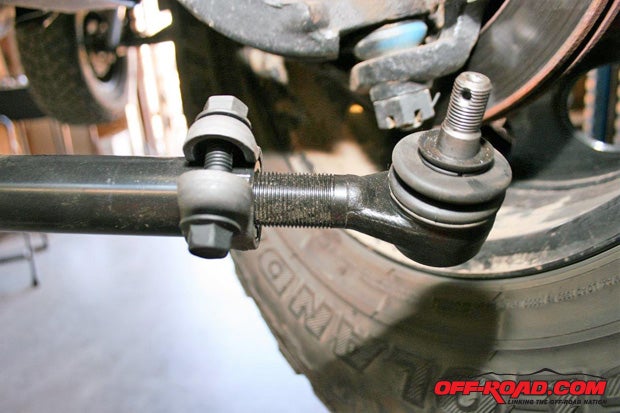
In addition to strong wheels, strong steering is also needed for controlling the larger, heavier wheels and tires. We turned to Rugged Ridge for its heavy-duty steering components (replaces the OEM tie rod with a stronger straight tie rod) and stabilizer. Once the Jeep was finished, we took it to a Ted Wiens store in Las Vegas, Nevada, for a full chassis alignment. A full chassis alignment should be done after any suspension rebuild, and the Ted Wiens shops have the requisite experience with four wheelers.
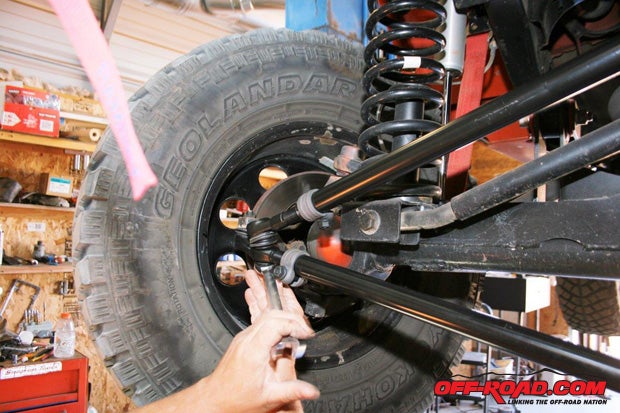
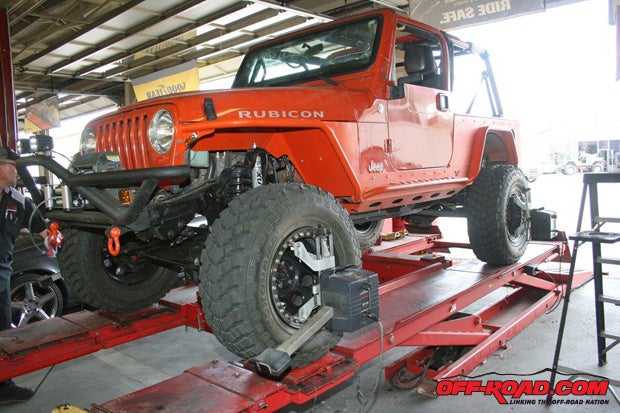
With Alloy and RCV extreme-duty axles, a Cardin CV driveshaft from Powertrain Industries, Yokohama 35-inch M/T tires on Raceline bead locks, and deeper Yukon gears, we’ve built a strong Wrangler into a Hammers-ready mean machine. And now that the 2005 Rubicon Unlimited is finished and aligned, maybe we could give Ivan a ride he’d get a kick out of.
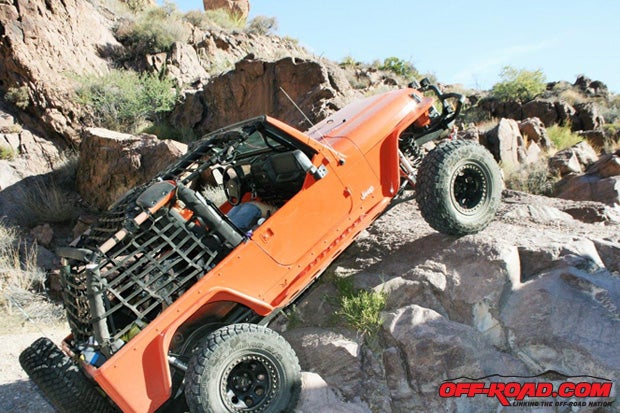
Source List:
ARB
http://www.arbusa.com/
Alloy USA
http://www.alloyusa.com/
GenRight
http://www.genright.com/
Powertrain Industries
http://www.powertrainindustries.com/
Precision Automotive
928.757.7273
RCV Off-Road Performance Products
http://www.rcvperformance.com/
Rugged Ridge
http://www.ruggedridge.com/
Rusty’s Off-Road
https://rustysoffroad.com/
Summit Racing
http://www.summitracing.com/
Ted Wiens Tire & Auto
http://www.tedwiens.com/
TeraFlex
https://teraflex.com/
TNT Customs
http://www.tntcustoms.com/
Yokohama Tires
http://www.yokohamatire.com/
Yukon Gear and Axle
http://www.yukongear.com/


 Your Privacy Choices
Your Privacy Choices